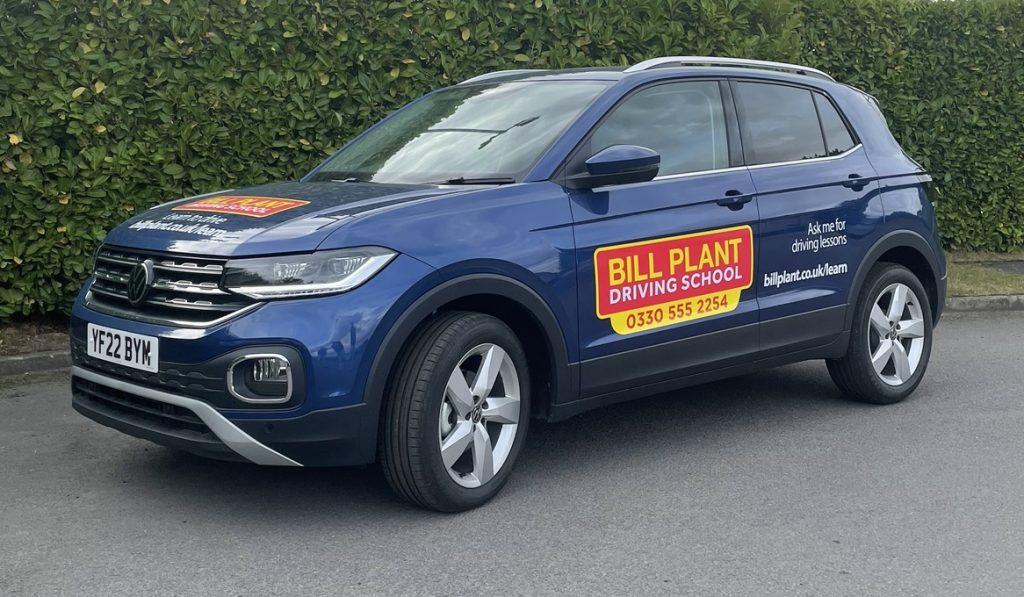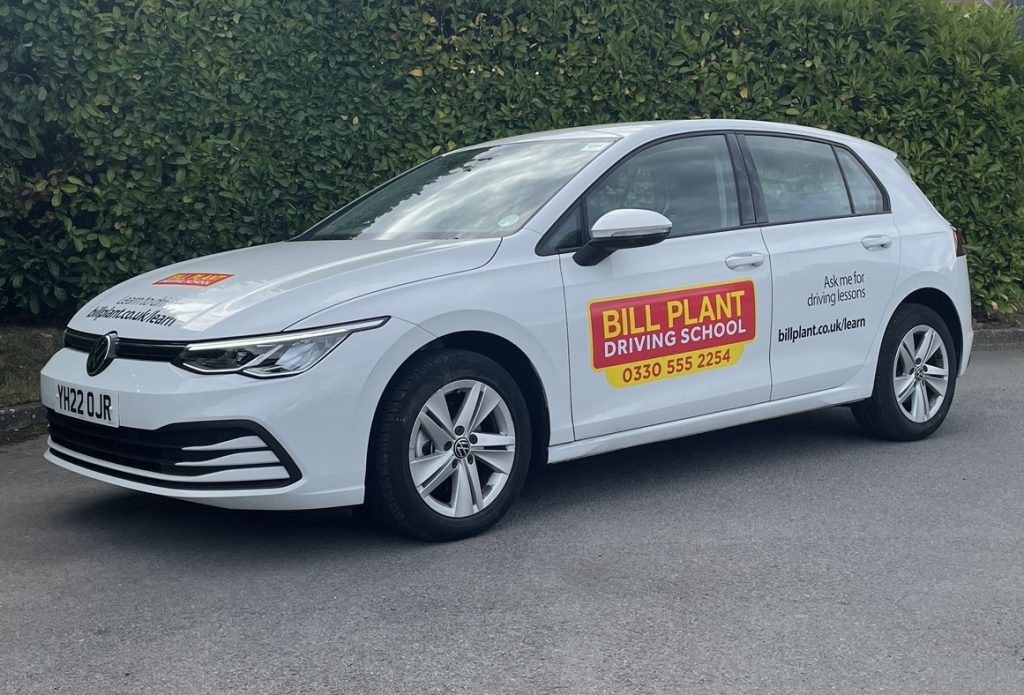A little shaky on the basics of driving? We’ve got you.
At Bill Plant Driving School we help thousands of people learn to drive every single year. And everyone starts the same way; with the basics.
In our new series, we’re going to cover everything you’ll be taught in those early driving lessons, so you can revise what you’ve learned or simply prepare for your first lesson.
So what comes first?
Well, we’ll be doing a few guides on setting up your car. But, once you’ve got that out of the way, it’s time to start driving.
In this guide, you’ll learn how to start your car, how to move off, and then how to stop in a controlled way.
Let’s get going.
Before you start your car
First of all, once you’ve set up your car seat, adjusted your mirrors and arranged your steering wheel you’ll need to familiarise yourself with the rest of the car. This means working out which pedal does what and whether you’re driving a manual or an automatic.
If you’re learning to drive an automatic you’ll not have a clutch or a traditional gear stick, although you may still have a stick, so things are a little simpler.
Identify your pedals: clutch, accelerator & brake
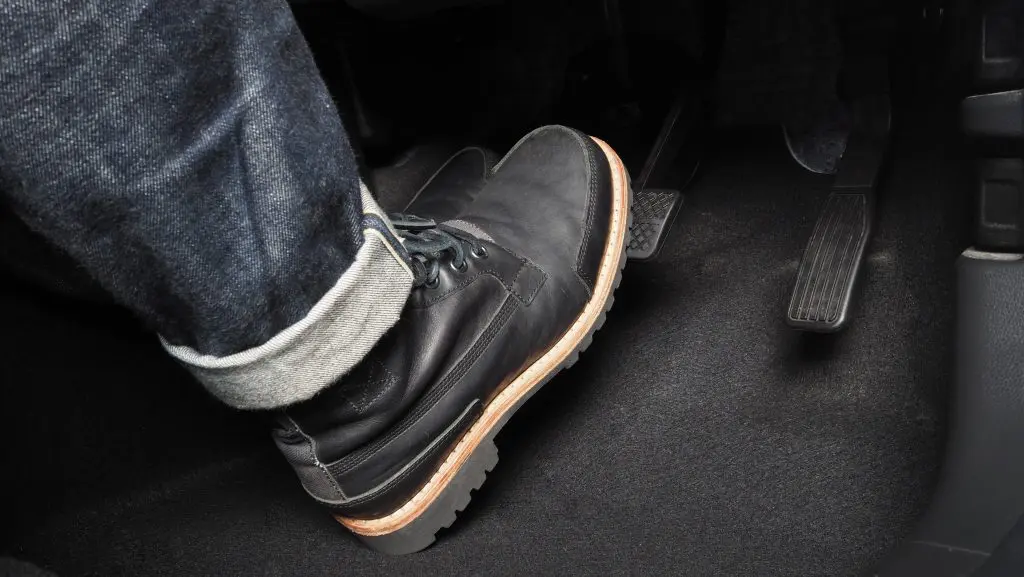
In a manual car, you’ll have three pedals at your feet. These are, from left to right:
- Clutch pedal – In a manual car, this pedal is essential for changing gears and pulling off. It will always be the pedal on the left. You’ll need to press the clutch to change gears and whenever you stop, to avoid stalling the car. Simply put, the clutch pedal connects the engine with the wheels. You’ll operate this with your left foot.
- Brake pedal – In a manual car this will be the middle pedal, but in an automatic, it’s the one on the left. Resist the temptation to operate this with your left foot. You’ll be using your right foot for both the brake and the accelerator. In short, the brake pedal makes your car stop. Press it gently to avoid a sudden jolted stop.
- Accelerator pedal – Finally, the accelerator is the pedal on the right. Simply put, you press this to make your car speed up. The more you press it the faster you’ll go. But, you’ll need to be in the correct gear to utilise it properly.
Identify your gear stick
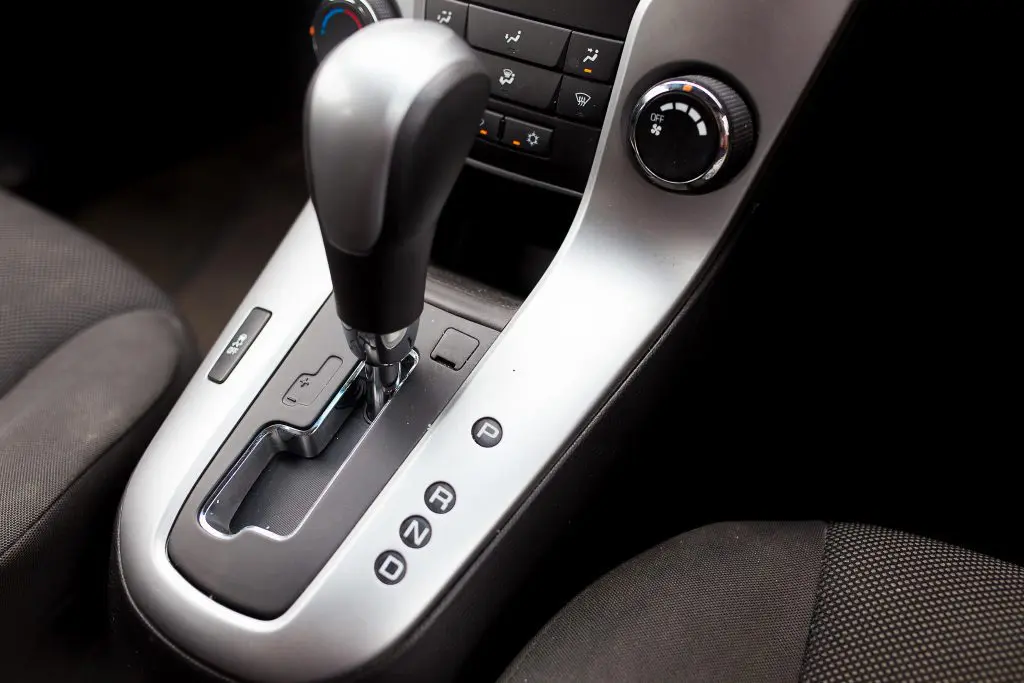
The gear stick is the handle that sticks vertically up on your left, between you and your passenger. In a manual transmission car, you’ll use this to change between gears 1 to 5 or 6 and reverse.
In an automatic car, you’ll use it to change between the park, drive, and neutral.
When you first get into your car your gear stick should be in neutral. In a manual car, this means it’s not assigned to any gear and is simply resting in the middle. More on that later.
Identify your handbrake
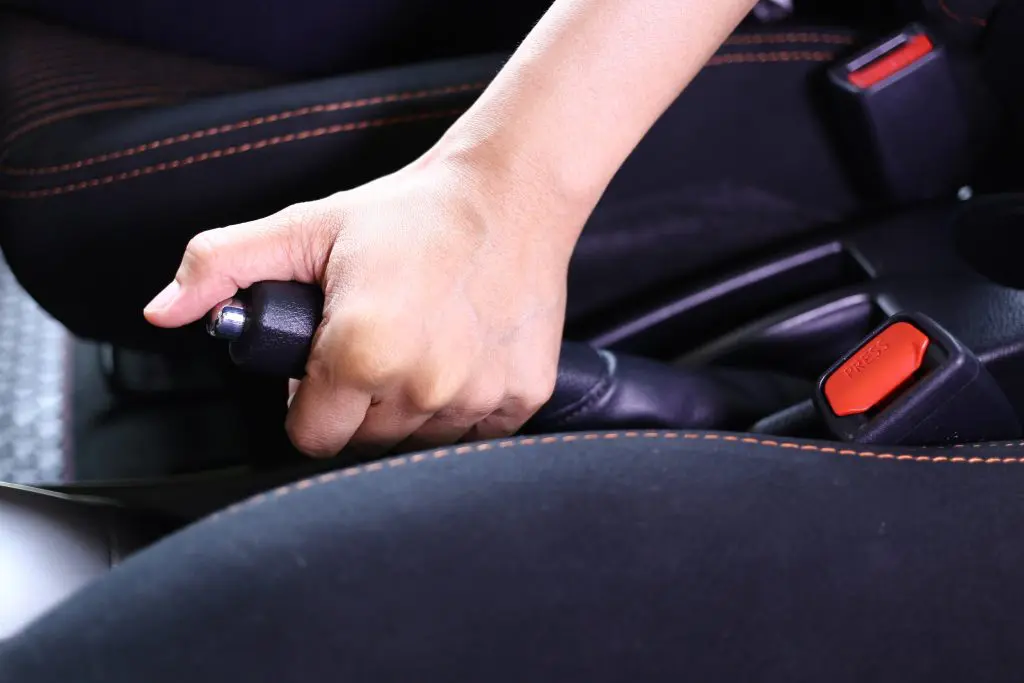
Finally, you need to check your handbrake. Whenever your car is parked your handbrake should be engaged to stop your car from rolling.
A handbrake will either be a long stick lever with a button on top or a simple paddle. Whichever it is, it will be in the same place, to the left of the driver between you and the passenger seat.
With a lever handbrake, you’ll be able to tell it’s engaged because it has been lifted all the way up. To lower it, you press the button and push it down. To engage it you press the button and pull it up.
With a paddle handbrake you simply flip it up to activate it, then it de-activates automatically when you accelerate.
How to start a car
Now you’re familiar with everything you need, let’s get your car started.
Regardless of the car you are driving, the first thing you will do is fasten your seatbelt.
How to start a manual transmission car
- Place your key in the ignition – Your ignition will be located to the right of your steering wheel, just behind it. In some instances, this will just be a button, known as ‘push-button ignition’.
- Turn the key or press your push-button ignition – Turn it all the way to start the engine.
- Put the clutch to the floor – Use your left foot to push the clutch pedal all the way down.
- Put your car into first gear – With the clutch down you just need to move the gear stick into first, which is the top left slot.
How to start an automatic car
- Place your key in the ignition – Your ignition is located behind your steering wheel to the right. It could also be a button.
- Turn your key or press your button
- Place your foot on the brake and press down – As there’s no clutch you need to make sure you do this to avoid your car moving before you’re ready, even though your handbrake will still be on at this stage.
- Switch to ‘Drive’ or ‘D’ – now move your gearstick to ‘D’ which stands for drive.
You’ve started your car… it’s that simple. Now you need to learn how to move off.
How to move off
Moving off simply means driving away from wherever you are parked or stopped. You’ll hear this term used by instructors and examiners. There are a number of safety checks you’ll need to make as part of your moving off routine.
In a manual car
- Start the car up asv you did above – So you’re in gear with the clutch depressed.
- Stick on your indicator – If you’re parked at the side of the road you need to indicate so passing traffic knows where you are going.
- Place your right foot over the accelerator
- Check your mirrors and your blind spot – that’s all your mirrors and then any spots they don’t reach.
- Ease up on the clutch until you find the bite point – The bite point is where you’ll feel a slight vibration.
- Push down very gently on the accelerator to rev your car
- Release the handbrake and pull away
- As you move off you’ll lift your foot entirely off the clutch – Use the accelerator to speed up.
- Shift gears into second gear – Dropping the clutch back down and moving the gear stick.
- Pull the clutch back up and keep driving.
- Turn off the indicator if you had to use it.
The key to moving off smoothly is to only lift your foot gradually. If you do it too quickly or don’t rev your accelerator enough, you could stall your car.
What to do if you stall when moving off
If you stall when you’re moving off, don’t panic. Stalling is simply your engine cutting out because you came off your clutch too quickly and didn’t have the power to move forward. Stay as calm as you can then:
- Apply the brakes
- Turn off your engine
- Place your gear stick in the neutral position
- Go through the starting up process again
In an automatic car
In an automatic, it’s a tiny bit different, as you aren’t juggling gear sticks and the clutch. You just:
- Follow the steps to start the car for an automatic – you should be in ‘drive’ at this stage.
- Lift your foot off the brake
- Start indicating if you need to do so
- Check your mirrors and your blind spot
- Start accelerating gently
- Turn off the handbrake
With an automatic, it should be that simple, as your gears will change automatically. Your car simply starts and you pull away.
How to stop a car
Now you’re going, you just need to drive as normal. If you’re new to lessons this will likely be done at a slow pace in a quiet area. Next up you need to learn how to stop your car, or how to brake properly. This is an essential skill for safe driving, and it’s not as simple as slamming on the brakes.
You’ll need to be aware of the speed you’re going, the road conditions, and of other cars around you.
Braking in a manual car
- Plan where you want to stop
- Check your mirrors and indicate if appropriate
- Ease up on the accelerator
- Press down on the brake gently
- Press down on the brake more firmly if required
- Press down on the clutch – if you are at a junction or traffic lights, you can then go through the process of pulling away. If you are parking then go to the next step.
- Lift your handbrake
- Turn off your indicator if you had to turn it on
- Put your car into neutral
- Turn your engine off
Braking in an automatic car
- Plan where you want to stop
- Check your mirrors and indicate if appropriate
- Ease up on the accelerator
- Press down on the brake pedal gently
- Press down on the brake more firmly if required
- Come to a stop
- Place the gear stick in neutral if you are done with driving.
- Turn off the indicators if you had to use them
- Place the handbrake
- Place your gear stick in ‘park’ while you have the car running
- Turn off your car
Learn the basics with Bill Plant Driving School
You can also discover more related guides such as how long it takes to learn to drive, the best cars for learner drivers, 10 driving test tips, and how much it costs to learn to drive to ensure you are fully prepared prior to your first driving lesson.
At Bill Plant Driving School we help thousands of people of all ages learn to drive. We know how stressful it can be to take your first driving lessons, but we’re here to make it easier. We teach people in manual cars and automatic cars every single day.
Your driving instructor will cover everything, so as soon as you sit down in the driver’s seat and the engine starts, you don’t need to worry.
